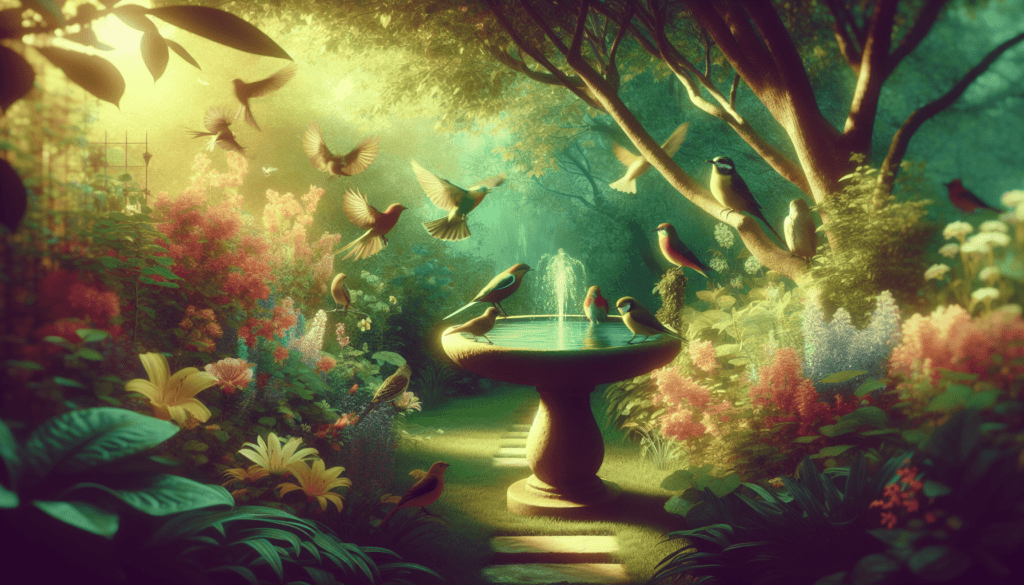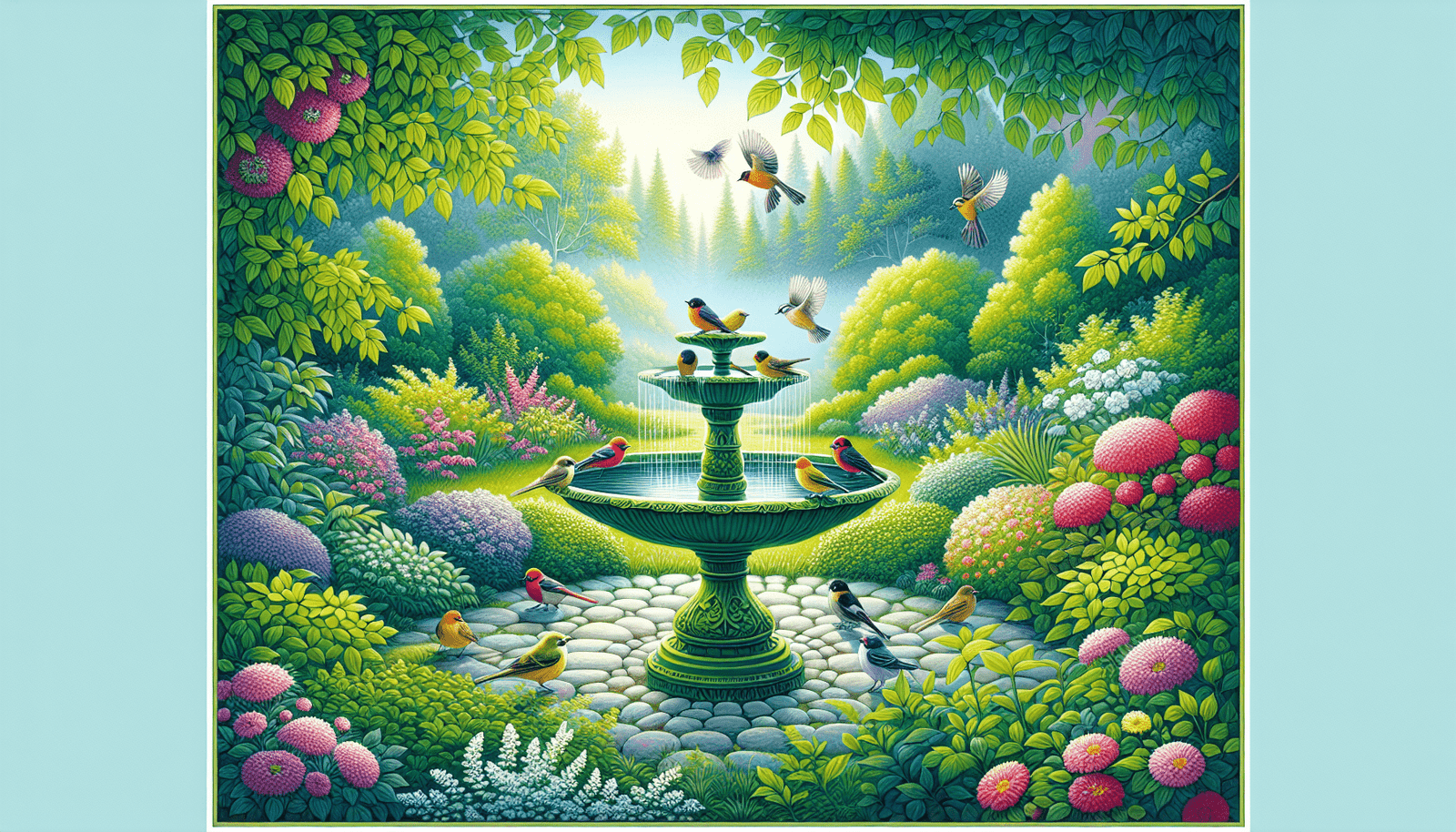Have you ever thought about creating a garden specifically designed to attract birds for your enjoyment? If so, you’re in the right place! In this article, we will walk you through the essentials of building a garden for birdwatching. From selecting the right plants to providing the necessary habitat, we’ve got you covered. Let’s get started!
Planning Your Bird-Friendly Garden
When it comes to creating a garden that attracts birds, proper planning is key. Start by selecting a suitable location in your yard that provides a mix of sun and shade throughout the day. Consider the size of the garden and the types of birds you want to attract. Think about the layout and design to create a welcoming environment for our feathered friends.
Choosing Native Plants
Native plants are essential for attracting birds to your garden. They provide food, shelter, and nesting sites for a variety of bird species. Research the types of plants that are native to your region and select a mix of shrubs, trees, and flowers to create a diverse habitat. Consider planting a variety of species that bloom at different times of the year to provide food sources throughout the seasons.
Creating a Bird-Friendly Habitat
Creating a bird-friendly habitat in your garden involves providing the essentials that birds need to thrive. This includes food sources, water, shelter, and nesting sites. By incorporating these elements into your garden design, you can attract a wide variety of birds and create a welcoming environment for them to visit and potentially nest.
Providing Food Sources
One of the most important aspects of creating a bird-friendly garden is providing a variety of food sources for birds. Consider planting native plants that produce seeds, berries, fruits, and nectar that birds can feed on. You can also supplement these natural food sources with bird feeders filled with seeds, suet, and other treats that birds enjoy. Make sure to place feeders in different locations throughout the garden to prevent overcrowding and allow all birds to access the food.
Installing a Birdbath
Water is essential for birds to drink and bathe in, especially during hot summer months. Installing a birdbath in your garden provides birds with a source of clean water for drinking and grooming. Choose a shallow birdbath with a rough surface for perching to make it easier for birds to access. Keep the water clean and change it regularly to prevent the spread of disease. Adding a small fountain or dripper can attract even more birds to your garden.
Creating Shelter and Nesting Sites
Birds need shelter and nesting sites to feel safe and secure in your garden. Planting dense shrubs and trees provides birds with places to hide from predators and seek refuge from harsh weather. Consider adding birdhouses, nest boxes, and nesting materials to create additional nesting sites for birds. Make sure to place birdhouses in different locations and at varying heights to accommodate different bird species.

Maintaining Your Bird-Friendly Garden
Once you have created a bird-friendly garden, it is important to maintain it to ensure that it continues to attract birds and provide them with the necessary resources. Regular maintenance tasks include watering plants, pruning shrubs, cleaning bird feeders and birdbaths, and removing weeds and debris. By staying on top of these tasks, you can create a healthy and inviting environment for birds to enjoy.
Watering Plants
Proper watering is essential for the health and growth of the plants in your garden. Check the moisture levels in the soil regularly and water plants as needed, especially during hot and dry periods. Consider using a drip irrigation system or soaker hoses to water plants at the root level and conserve water. Avoid overwatering, as this can lead to root rot and other issues. Mulching around plants can help retain moisture and reduce the need for frequent watering.
Pruning Shrubs and Trees
Regular pruning of shrubs and trees is necessary to maintain their health and shape. Remove dead or damaged branches, thin out dense growth, and shape plants to promote air circulation and sunlight penetration. Prune plants in the dormant season to encourage new growth and flowering. Be mindful of nesting birds and avoid pruning during the breeding season to prevent disturbance.
Cleaning Bird Feeders and Birdbaths
Regular cleaning of bird feeders and birdbaths is essential to prevent the spread of disease among birds. Empty and clean feeders with hot, soapy water at least once a month to remove mold, bacteria, and debris. Scrub birdbaths with a brush and hot water to remove algae and dirt. Rinse them thoroughly and refill with clean water. Consider moving feeders and birdbaths to different locations periodically to prevent the buildup of waste and pests.
Removing Weeds and Debris
Weeds and debris can compete with plants for nutrients and water and provide hiding places for predators that may harm birds. Regularly inspect your garden for weeds, fallen leaves, and other debris and remove them promptly. Consider using mulch to suppress weed growth and retain moisture in the soil. Avoid using chemical herbicides that can be harmful to birds and other wildlife. Instead, pull weeds by hand or use natural weed control methods.
Attracting Specific Bird Species
Depending on the types of birds you want to attract to your garden, you may need to make specific adjustments to create an environment that caters to their needs. Research the bird species in your area and their preferences for food, water, shelter, and nesting sites. By providing the essentials that specific bird species require, you can increase the likelihood of attracting them to your garden.
Attracting Hummingbirds
Hummingbirds are unique birds known for their vibrant colors and rapid wingbeats. To attract hummingbirds to your garden, plant native flowers that produce nectar, such as bee balm, trumpet vine, and columbine. Consider hanging a hummingbird feeder filled with sugar water to supplement their diet. Provide perches for hummingbirds to rest and observe their surroundings. Create a water mister or dripper to attract hummingbirds looking for a quick drink or bath.
Attracting Songbirds
Songbirds are known for their melodious calls and colorful plumage. To attract songbirds to your garden, plant a variety of trees, shrubs, and flowers that produce seeds, berries, and fruits that songbirds enjoy. Install bird feeders filled with sunflower seeds, cracked corn, and peanuts to provide additional food sources. Provide nesting sites by adding birdhouses, nest boxes, and materials such as twigs, grass, and feathers for songbirds to build their nests.
Attracting Woodpeckers
Woodpeckers are fascinating birds with distinctive behaviors and drumming sounds. To attract woodpeckers to your garden, plant trees with soft wood that they can excavate for insects and nest sites. Install suet feeders filled with high-energy suet cakes to attract woodpeckers looking for a protein-rich meal. Provide dead trees or snags for woodpeckers to use as drumming posts and nesting sites. Be patient and observant, as woodpeckers can be shy and easily startled.

Conclusion
Creating a bird-friendly garden is a rewarding experience that allows you to connect with nature and enjoy the beauty of birds in your own backyard. By following the essentials of building a garden for birdwatching, you can attract a diverse array of bird species and provide them with the resources they need to thrive. From choosing native plants to providing food, water, shelter, and nesting sites, there are many ways to create a welcoming environment for birds. Remember to maintain your garden regularly and make adjustments to attract specific bird species. With time and patience, you can create a haven for birds to visit, nest, and enjoy year-round. Happy birdwatching!

